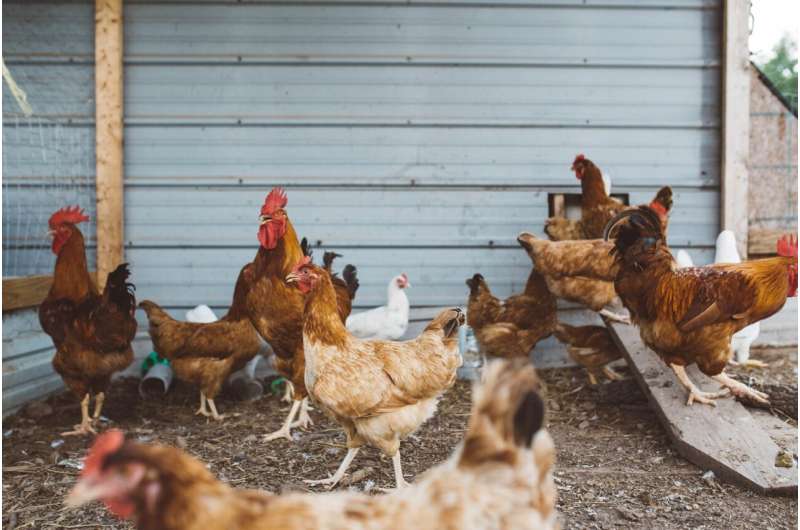Credit: Unsplash/CC0 Public Domain
A biosensor network that can detect airborne viral particles could be put in place on animal farms and livestock markets. With appropriate analysis of the data from these internet-of-things (IoT) devices it might be possible to detect the earliest presence of a putative infectious agent that has undergone zoonosis and so made the leap from animal pathogen to a virus that can cause human disease, as occurred with the COVID-19 virus, SARS-CoV-2.
A proposal for such a network, inspired by the One-Health initiative is discussed in the International Journal of Sensor Networks. Humanity has suffered plagues for millennia as has the rest of the animal world. At the time of writing avian influenza is affecting birdlife while the COVID-19 epidemic is still very much with us. Pathogens once thought to be under control, such as those that cause tuberculosis and polio, are still with us. However, pathogens circulating in the animal kingdom can evolve into novel forms that might infect people that come into contact with them at any time.
Uche K. Chude-Okonkwo of the Institute for Intelligent Systems at the University of Johannesburg in Auckland Park, South Africa, points out that we need to be on our guard for emerging viral pathogens. Being on guard will allow us to respond faster to the emergence of potential human pathogens originally from animal hosts sources and so put into place controls to reduce the risk of an emergent virus spreading to the wider population and causing another devastating pandemic.
Advances in biology and sensor technology coupled with technological advances in communications and devices could be the answer to a more timely response to an emerging pathogen, Chude-Okonkwo suggests. His work could form the basis of an important aspect of the One Health initiative. This global, interdisciplinary project considers how human health, animal health, and ecosystem health are all linked and have an impact on emergent pathogens and the nature of the next pandemic.
"The One Health initiative promotes the acquisition and processing of real-time health information of all the living things in a given system, as well as that of the environment to enable the timely identification of prime sources and the emergence time of infectious diseases," writes Chude-Okonkwo. "This will enable the appropriate authority to implement intervention protocols early enough to avoid or mitigate epidemics," he adds.
More information: Uche K. Chude Okonkwo, One Health-inspired early implementation of airborne disease spread mitigation protocols aided by IoT-based biosensor network, International Journal of Sensor Networks (2022). DOI: 10.1504/IJSNET.2022.10049987
Provided by Inderscience
























